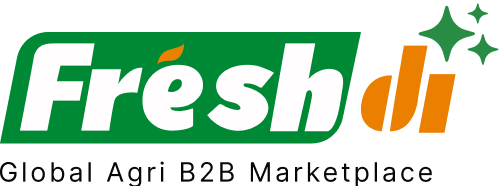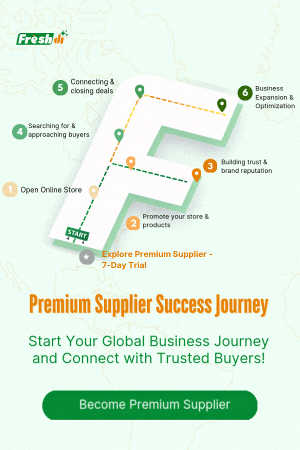Introduction – Exploring Brazil’s Reputation for Quality Pepper
Brazil isn’t just famous for its coffee and carnival — it’s one of the world’s rising stars in premium pepper production. With its tropical climate, year-round warm temperatures, and nutrient-rich soil, Brazil offers perfect growing conditions for producing high-quality pepper varieties that are rich in flavor and high in piperine content.
But what really sets Brazil apart is how its farmers combine traditional cultivation methods with modern agricultural innovations. From the rainforests of Pará to the plantations of Espírito Santo, Brazilian pepper is cultivated with precision and care. For any business sourcing pepper globally, understanding these quality nuances can be the difference between a good product and an exceptional one.
Defining & Verifying Pepper Excellence in Brazil
So, what makes Brazilian pepper “premium”? Let’s break it down.
- Piperine Content: This active compound gives pepper its pungency and health benefits. Brazilian pepper, especially black pepper, often has a high piperine ratio due to optimal harvesting at 80% red maturity.
- Flavor Profile: Thanks to the country’s rich volcanic and sandy loam soils, Brazilian pepper berries develop deep, complex flavors with floral and citrusy undertones.
- Grading Standards: Brazil follows strict export-focused quality metrics, including size grading (MG1, MG2), moisture content controls, and cleanliness indices.
- Certifications: Many Brazilian pepper exporters now carry certifications like Organic, Fair Trade, and ISO 22000 to meet global demand for verified sourcing.
Regions like Pará, Bahia, and Espírito Santo produce slightly different profiles due to microclimate variations. For example, pepper from Espírito Santo tends to have higher oil content, while Pará’s yields are typically larger.
Platforms like Freshdi provide detailed RFQs that specify these attributes, allowing buyers to align with exact quality expectations.
Top 10 Verified Pepper Suppliers in Brazil – Setting the Benchmark
These suppliers were selected based on verified credentials, export performance, certifications, and buyer reviews on Freshdi. They represent the crème de la crème of Brazil’s pepper industry.
- RAC Internacional LTDA
- Trade Term: FOB
- Payment Term: T/T or L/C
- Annual Revenue: $1-5M
-
Specialization: Bulk Black Pepper
-
CNI Centro de Negocios Integrados e Importacao e Exportacao LTDA
- Trade Term: To be discussed
- Payment Term: To be discussed
- Packaging: Bottle
-
Specialization: Pepper-based sauces for retail and foodservice
- Trade Term: To be discussed
- Payment Term: To be discussed
- Product Focus: Pink Pepper
-
Known For: Premium gourmet and organic pepper varieties
- Export Markets: EU & Middle East
- Certification: USDA Organic, GlobalG.A.P.
-
Products: Black & White Peppercorns
- Specialty: Aromatic and smoked pepper
- Packaging: Vacuum-sealed bulk & retail
-
Trade Term: CIF & FOB
- Based in: Pará
- Focus: Black Pepper for industrial food applications
-
Sustainability: Participates in fair trade cooperatives
- Unique Offerings: Organic pepper blends
- Market Reach: North America, Japan
-
Quality Certifications: ISO 22000, EU Organic
- Region: Bahia
- Known For: High-oil content black pepper
-
Buyer Reviews: High reliability and excellent customer support
- Feature Product: Wild-harvested pink pepper
- Compliance: HACCP, Rainforest Alliance
-
Packaging: Retail jars & foodservice drums
-
- Focus: White pepper for gourmet markets
- Export Volume: 80+ containers/year
- Quality Control: In-house lab testing for piperine and aflatoxins
Dynamic Ranking Note: Rankings may vary week to week based on activity and performance on platforms like Freshdi, which tracks “Supplier of the Month” and trending exporters based on verified buyer interactions and RFQ success rates.
Market Navigation – Navigating Market Trends for Premium Pepper
Let’s talk about what’s hot — and what’s not — in the 2025 pepper market.
Current Demand Trends for Premium Certified Brazilian Pepper
Brazil’s black pepper exports surged to $27.9 million in January 2025 — that’s a 38.3% jump compared to the previous year. The top buyers? Vietnam, UAE, Senegal, India, and Egypt (OEC).
The average export price climbed to $3,601 per ton in early 2024, up 25% year-over-year. This reflects a global appetite for high-quality, traceable pepper from consistent suppliers.
Global Consumer Shifts
Today’s food buyers (and consumers) want more than just spice. They want a story.
- Organic and sustainable: More buyers are demanding certified organic pepper, and willing to pay a premium for it.
- Flavor innovation: New blends like lemon-pepper, smoked pepper, and pink pepper are gaining popularity.
- Culinary exploration: As global cuisines go mainstream, pepper variety demand is diversifying.
Traceability and Supply Chain Developments
Traceability is no longer optional — it’s expected.
- Freshdi helps suppliers showcase traceable credentials and verified certifications.
- Buyers can now filter RFQs to only show suppliers with traceable farming practices, lab reports, and third-party audits.
Latest Market News (2025)
- Climate delays: Brazil’s 2025 harvest was delayed by 1.5 to 2 months due to El Niño impacts, reducing available inventory and pushing prices higher.
- CAGR forecast: The Brazilian black pepper market is expected to grow at a CAGR of 4.20% between 2025–2033, reaching $0.14 billion by 2033 (IMARC).
- Platform insights: Freshdi’s Week 22 data shows rising RFQs for smoked and pink pepper, particularly from gourmet food companies in Europe and North America.
Conclusion – Strategic Sourcing for Quality
Sourcing pepper from Brazil isn’t just a smart choice — it’s a strategic move. With its ideal growing conditions, high production standards, and a rapidly evolving export ecosystem, Brazil is positioning itself as a global leader in premium pepper supply.
If you’re a buyer looking for excellence, here’s what you should focus on:
- Check for certifications: Organic, ISO, HACCP — these signal reliability.
- Understand the region: Different states in Brazil produce pepper with different flavor profiles and oil content.
- Use platforms like Freshdi: They help you verify supplier claims, access real-time RFQs, and connect with trusted exporters.
Buyer’s Checklist: Sourcing High-Quality Pepper from Brazil
✅ Do the suppliers have recognized certifications (e.g., Organic, Fair Trade)?
✅ Is the harvest traceable from farm to export?
✅ Are moisture and piperine levels within acceptable export standards?
✅ Has the supplier been verified by platforms like Freshdi?
✅ Do they offer flexible trade terms (FOB, CIF, etc.)?
Future Outlook
As climate patterns shift and consumer demands evolve, Brazil’s pepper market is likely to see:
- Continued investment in drought-tolerant varieties.
- Emphasis on digital traceability tools.
- Expansion into gourmet and health food sectors.
The future of pepper is spicy — and Brazil’s at the center of it.
How Freshdi Empowers Buyers in the Pepper Industry
- Verified Supplier Listings: Only reputable exporters make it onto Freshdi’s radar.
- RFQ Trends: See what the world is asking for in real time.
- Dynamic Rankings: Updated weekly so you can spot “hot” suppliers.
- Quality Matchmaking: Connects you with suppliers that meet your exact specs — no more guesswork.
References
- Brazilian Black Pepper – Lakay Business
- The Global Pepper Market in 2025 – ESSFeed
- IMARC Group – Brazil Black Pepper Market
- OEC – Brazil Pepper Export Data
- Freshdi – Top Pepper Suppliers in Brazil
FAQs
1. What makes Brazilian pepper different from Vietnamese or Indian pepper?
Brazilian pepper often has higher piperine content and a deeper flavor profile due to its unique soil and climate conditions. It’s also gaining traction in the organic and gourmet markets.
2. Are all Brazilian pepper suppliers certified?
Not all, but many top exporters carry certifications like Organic, Fair Trade, and ISO 22000. Platforms like Freshdi can help verify credentials.
3. What’s the best time to source pepper from Brazil?
Peak harvest season is typically between July and October, but climate changes may shift this. Always check latest harvest updates.
4. How can I ensure traceability in my supply chain?
Use digital platforms like Freshdi that prioritize verified sourcing, supplier audits, and buyer-seller transparency.
5. Is pink pepper the same as black pepper?
No, pink pepper comes from a different plant species but is often used in gourmet spice blends. Brazil is a key exporter of both.


